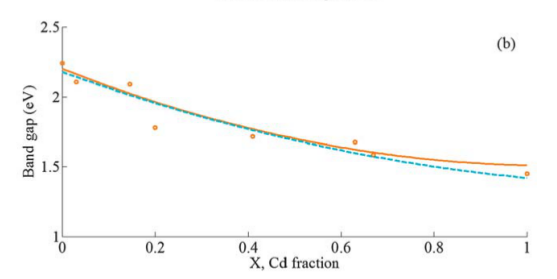Bandgap engineering of single-crystalline alloy CdxZn1-xTe nanowires is achieved successfully through control of growth temperature and a two zone source system in a vapor-liquid-solid process. Extensive characterization using electron microscopy, Raman spectroscopy and photoluminescence shows highly crystalline alloy nanowires with precise tuning of the bandgap. It is well known that bulk CdxZn1-xTe is popular for construction of radiation detectors and availability of a nanowire form of this material would help to improve detection sensitivity and miniaturization. This is a step forward towards the accomplishment of tunable and predetermined bandgap emissions for various applications.

Bandgap engineering of single-crystalline alloy CdxZn1-xTe nanowires is achieved successfully through control of growth temperature and a two zone source system in a vapor-liquid-solid process. Extensive characterization using electron microscopy, Raman spectroscopy and photoluminescence shows highly crystalline alloy nanowires with precise tuning of the bandgap. It is well known that bulk CdxZn1-xTe is popular for construction of radiation detectors and availability of a nanowire form of this material would help to improve detection sensitivity and miniaturization. This is a step forward towards the accomplishment of tunable and predetermined bandgap emissions for various applications.
